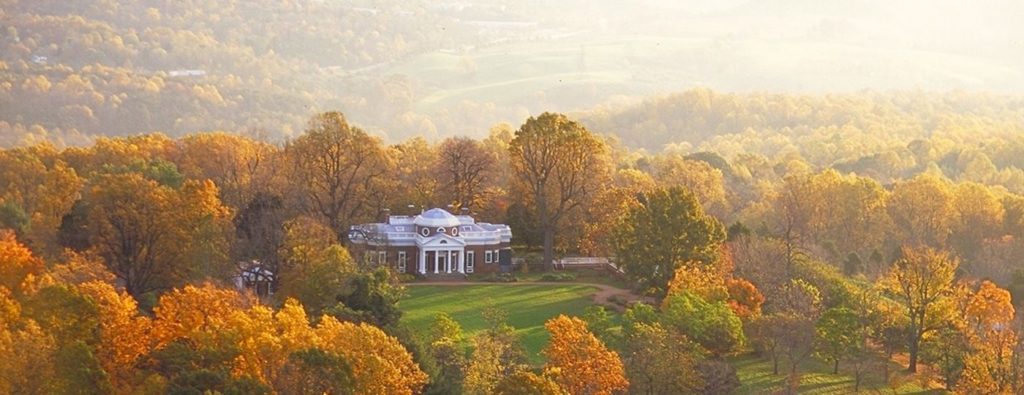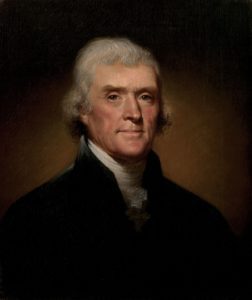Historic D.C.
By • July 12, 2017 0 962

Thomas Jefferson once said, “Good wine is a necessity of life for me.” His appreciation of wine began when he was a student at the College of William and Mary in Williamsburg, Virginia. The gifted young scholar enjoyed dinners with wine imported from Europe at the table of his law professor, George Wythe. His enthusiasm grew to fever pitch when he was appointed ambassador to France after the American Revolution.
When Jefferson’s tenure in Paris ended, he planned a detailed tour of the vineyards of Germany, Italy and, most of all, France. On this extended trip, he met with the best vintners in the various regions, so that he could buy directly from them when he returned home. This way, he could avoid getting spoiled wine — often the case when European wines were imported by Americans. He also made sure that wine would be sent to him in bottles, not barrels, in order to avoid getting watered-down wine.

Official Presidential portrait of Thomas Jefferson by Rembrandt Peale, 1800.
Jefferson personally financed this elaborate trip. The next time you visit the bar in the Jefferson Hotel, you can examine the maps that show the route of his elaborate journey. Clearly, he was already a confirmed wine aficionado. When he became president, he filled the White House wine cellar with his favorite choices; some say the cellar has probably never been as well-stocked since.
Jefferson’s beloved creation, Monticello, was a great challenge to him, as well as a source of great satisfaction. When he was a child on his family’s farm, he could see the dome of the hill on which he would one day build his classically inspired villa. Many years and many incredible experiences would pass before Jefferson designed this Palladian masterpiece, which overlooked the wilderness that was part of the Louisiana Purchase he orchestrated (no doubt one of the greatest real estate bargains of all time).
His plans for Monticello included the cultivation of grape varieties from European vines. Although the soil was conducive for growing grapes, having come all the way from Europe the ungrafted vines did not fare well. Jefferson’s many attempts to establish a vineyard failed.
Enter Dr. Norton. Norton was a medical doctor in Richmond who suffered a great tragedy: his wife and newborn daughter both died in childbirth. To survive this trauma, he threw himself into the pursuit of developing a fine American wine. Norton used the wild vines abundant in Virginia, combining the seedlings until he came up with a wine that resembled the rich blended wines of Bordeaux.
By 1830, he was selling his Norton wine, still a great local favorite in Virginia. Dark and smoky, this rich red wine does in fact resemble the wines of Bordeaux. If you need further encouragement, the thick-skinned berries give this unique varietal twice as much of the health-boosting resveratrol as one of its chief rivals, cabernet sauvignon.
The big question is: Did Thomas Jefferson know about Dr. Norton? Norton got recognition for his “invention” in 1821 and Jefferson died five years later. We have no idea if Jefferson learned of Norton and the American wine he created. The second question is: Would Jefferson have approved of this wine derived from wild vines? Or would he have insisted that the centuries-old European varietals to which he was so devoted were bound to be better?
While we can only speculate on the answers, what we do know is that this founding father is the inspiration for Virginia’s fast-growing wine industry, and that another pioneer, Daniel Norborne Norton, single-handedly created a wine varietal that would thrive even in the state’s humid and unpredictable weather. Bravo to both of our wine heroes!
Donna Evers is the owner and broker of Evers & Co., the largest woman-owned and woman-run real estate firm in the Washington metropolitan area; the proprietor of Twin Oaks Tavern Winery in Bluemont, Virginia; and a devoted student of Washington-area history. Reach her at devers@eversco.com.

